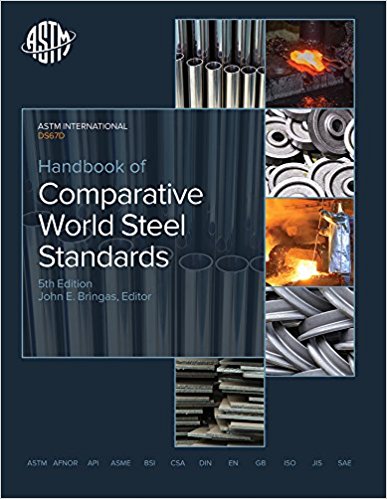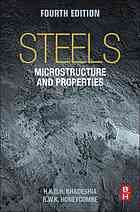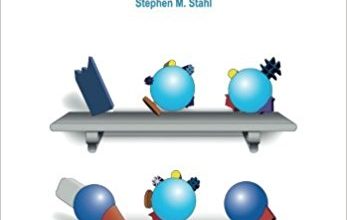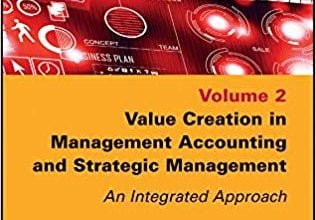
cost of Ebook is 15$ .Email us to send PDF. then you can download the Ebook. To be sure, you can request to send several sample pages from the Ebook.
خرید کتاب Handbook of Comparative World Steel Standards: 5th

DS67D
Handbook of Comparative World Steel Standards: 5th Edition
John Bringas
Published: 2016
DOI: 10.1520/DS67D-EB
ISBN-EB: 978-0-8031-7078-0
ISBN-PRINT: 978-0-8031-7077-3
Paperback: 863 pages
Publisher: ASTM International; 5th edition (July 26, 2016)
Language: English
ISBN-10: 0803170777
ISBN-13: 978-0803170773
ISBN-13: 9780803170773
خرید کتاب Handbook of Comparative World Steel Standards, 5th
Preface
This is the book I never wanted to write but always wanted to own. As a metallurgical engineer and longtime user of steel standards, author of the four CASTI Metals Data Books, and as a member of ASTM, ISO,
and SAE steel standard committees, I knew all too well the many pitfalls and challenges of writing such a
handbook. There were many steel standards from around the world that were new to me and that created
many surprises, including the Chinese GB steel standards, which were translated into English by the metallurgical engineers of CASTI Publishing, Inc.
Comparing steel standards is not an exact science, so the biggest challenge in preparing such a book
was deciding on the “rules of comparison.” Of the similar books on the market today, none explain in detail
why one steel is comparable to another. They simply appear together in a list of steels. I kept a daily diary
to help construct a workable set of comparison rules that I could share with other users to assist them in
understanding how and why one steel is comparable to another.
دانلود ایبوک Handbook of Comparative World Steel Standards, 5th
while the book was being written. It was not until the last chapter and the appendix were completed that I another review of the book necessary.database. Without it, the handbook would be much smaller. The addition of data from Chinese GB and database, many new comparable steels were also added to this edition.
I hope you enjoy using this handbook as much as I have. Tie a chain to it and anchor it to your desk
because once others see it, you may never see the book again.
I am interested in your comments and suggestions for improving this handbook and encourage you to send your feedback directly to ASTM
خرید PDF اورجینال کتاب خارجی Handbook of Comparative World Steel Standards نسخه 5
Library of Congress Cataloging-in-Publication Data
Names: Bringas, John E., 1953-
Title: Handbook of comparative world steel standards / John E. Bringas, editor.
Description: Fifth edition. | West Conshohocken, PA : ASTM International,
[2016] | “ASTM Stock No.: DS67D.” | Includes bibliographical references
and index.
Subjects: LCSH: Steel—Standards—Handbooks, manuals, etc. | Steel
alloys—Standards—Handbooks, manuals, etc.
خرید کتاب 4TH Steels: Microstructure and Properties
 Steels : microstructure and properties
Steels : microstructure and properties
Author: H K D H Bhadeshia; R W K Honeycombe
Publisher: Amsterdam : Butterworth-Heinemann, an imprint of Elsevier, [2017]
دریافت ایبوک Handbook of Comparative World Steel Standards, 5th
Get a detailed explanation of how and why one steel is comparable to another. No other book, currently on the market, does this. Compare standards from ASTM, AFNOR, API, ASME, BSI, EN, CSA, DIN, GB, ISO, JIS, and SAE.
This edition includes:
• 6,100+ steels
• 450+ worldwide standards
• 275+ new or updated standards
• Latest new, revised, and updated steel standards
• 155,000+ pieces of data
• 30,000+ pieces of Chinese steel data
• Changes from AFNOR, BSI, and DIN to their CEN designations
• Criteria for comparing steels
• Explanation and examples of designation systems of ASTM, SAE, UNS, and CSA
• Introduction to European (EN) standard steel designation systems
• Changes from DIN, BSI, and AFNOR to their new EN designations. D
خلاصه ایبوک 4th Edition Steels: Microstructure and Properties
فهرست مطالب کتاب 4th Edition Steels: Microstructure and Properties
Front Cover
Steels: Microstructure and Properties
Copyright
Contents
Preface to the First Edition
Preface to the Second Edition
Preface to the Third Edition
Preface to the Fourth Edition
Acknowledgments
Acronyms
Nomenclature
1 Iron and Its Interstitial Solutions
1.1 Introduction
1.2 Allotropes of pure iron
1.2.1 Thin lms and isolated particles
1.3 Austenite to ferrite transformation
1.3.1 Mechanisms of transformation
1.4 Carbon, nitrogen and hydrogen in solution
1.4.1 Solubility in a- and γ-iron
1.4.2 Diffusion of solutes in iron
1.4.3 Practical consequences of diffusion
کتاب خارجی Handbook of Comparative World Steel Standards
Homogenisation
1.5 Summary
References
Backnotes
2 Strengthening of Iron and Its Alloys
2.1 Introduction
2.2 Work hardening
2.3 Interstitial solid solution strengthening
2.3.1 The yield point
2.3.2 Role of interstitial elements in yield phenomena
2.3.3 Strengthening at high interstitial concentrations
2.4 Substitutional solution strengthening
2.5 Grain size
2.5.1 Hall-Petch effect
2.5.2 Nanostructured steels
2.6 Dispersion strengthening
2.7 Overall strength
2.8 Some practical aspects
2.9 Limits to strength
2.9.1 Theoretical strength
2.9.2 Hundreds of times stronger than steel
Fracture
2.10 Summary
References
Backnotes
خرید کتاب از طریق اینترنت Handbook of Comparative World Steel Standards
3.1 Iron-carbon equilibrium phase diagram
3.2 Austenite-ferrite transformation
3.3 Austenite-cementite transformation
3.4 Kinetics of the γ->a transformation
3.4.1 Growth kinetics of ferrite
3.5 Widmanstätten ferrite
3.5.1 Morphology
3.5.2 Shape change
3.5.3 Growth kinetics of Widmanstätten ferrite
3.5.4 Summary
3.6 Austenite-pearlite reaction
3.6.1 The morphology of pearlite
3.6.2 The crystallography of pearlite
Pitsch/Petch relationship
Bagaryatski relationship
3.6.3 Kinetics of pearlite growth
3.6.4 Divorced pearlite
3.6.5 Overall kinetics of pearlite formation
3.6.6 The strength of pearlite
3.7 Ferrite-pearlite steels
Normalising
Annealing
3.8 Summary
References
Backnotes
کتاب زبان اصلی Handbook of Comparative World Steel Standards
4 Solutes that Substitute for Iron
4.1 General principles
4.2 Alloying elements: γ and a phase elds
4.3 Distribution of alloying elements in steels
4.4 Effect of alloying elements on the kinetics of the γ/a transformation
4.4.1 The effect of alloying elements on the ferrite reaction
4.4.2 The effect of alloying elements on the pearlite reaction
Other effects
4.4.3 Alloy pearlite
4.5 Structural changes resulting from alloying additions
4.5.1 Ferrite/alloy carbide aggregates
Continuous growth of bres/laths
Repeated nucleation of carbides (interphase precipitation)
Nucleation in supersaturated ferrite
4.5.2 Alloy carbide bres and laths
4.5.3 Interphase precipitation
4.5.4 Nucleation in supersaturated ferrite
4.6 Transformation diagrams for alloy steels
4.7 Light steels
4.8 Summary
References
Backnotes
خرید کتاب از طریق اینترنت Handbook of Comparative World Steel Standards
5 Formation of Martensite
5.1 Introduction
5.2 General characteristics
5.2.1 The habit plane
5.2.2 Orientation relationships
5.2.3 Structure of the interface
5.2.4 The shape deformation
5.3 Crystal structure of martensite
5.4 Crystallography of martensitic transformations
5.5 Morphology of ferrous martensites
5.6 Kinetics of martensitic transformation
5.6.1 Nucleation of martensite
5.6.2 Growth of martensite
5.6.3 Overall athermal-transformation kinetics
5.6.4 Effect of alloying elements
5.6.5 Stress-induced transformation
5.6.6 Effect of austenite grain size
5.6.7 Effect of plastic strain on martensitic transformation
5.6.8 Thermal stabilisation
5.7 Strength of martensite
5.8 Shape memory effect
5.9 Summary
References
Backnotes
خرید کتاب اورجینال Handbook of Comparative World Steel Standards
6 Bainite
6.1 Introduction
6.2 Upper bainite (˜550-400°C)
6.3 Lower bainite (˜400-250°C)
6.4 The shape deformation
6.5 Carbon in bainite
6.6 Kinetics
6.7 Transition from upper to lower bainite
6.8 Granular bainite
6.9 Tempering of bainite
6.10 Role of alloying elements
Carbon
Other alloying elements
6.11 Use of bainitic steels
6.12 Summary
References
Backnotes
7 Acicular Ferrite
7.1 Introduction
7.2 Microstructure
7.3 Mechanism of transformation
7.4 Inclusions as heterogeneous nucleation sites
7.5 Nucleation of acicular ferrite
7.5.1 Lattice matching theory
7.5.2 Other possibilities
7.6 Summary
References
Backnotes
خرید کتاب زبان اصلی Handbook of Comparative World Steel Standards
8 Heat Treatment of Steels: Hardenability
8.1 Introduction
8.2 Use of TTT and continuous cooling diagrams
8.3 Hardenability testing
8.3.1 The Grossman test
8.3.2 The Jominy end quench test
8.4 Effect of grain size and chemical composition on hardenability
8.5 Hardenability and heat treatment
8.6 Quenching stresses and quench cracks
8.7 Cryogenic treatment
8.8 Summary
References
Backnotes
9 Tempering of Martensite
9.1 Introduction
9.2 Tempering involving cementite and transition carbides
9.2.1 Tempering: stage 1
9.2.2 Tempering: stage 2
9.2.3 Tempering: stage 3
9.2.4 Tempering: stage 4
9.2.5 Role of carbon content
9.3 Mechanical properties of tempered martensite
9.4 Steels with strong carbide-forming elements
9.4.1 The effect of alloying elements on the formation of iron carbides
9.4.2 The formation of alloy carbides: secondary hardening
9.4.3 Nucleation and growth of alloy carbides
9.4.4 Tempering of steels containing vanadium
9.4.5 Tempering of steels containing chromium
9.4.6 Tempering of steels containing molybdenum and tungsten
9.4.7 Complex alloy steels
9.4.8 Mechanical properties of tempered alloy steels
9.4.9 Mechanical properties: hydrogen trapping
9.5 Maraging steels
9.6 Summary
References
Backnotes
خرید کتاب علمی خارجی Handbook of Comparative World Steel Standards
10 Thermomechanical Treatment of Steels
10.1 Introduction
10.2 Controlled rolling of low-alloy steels
10.2.1 General
10.2.2 Grain size control during controlled rolling
10.2.3 Niobium atom clusters
10.2.4 Minimum achievable grain size
10.2.5 Dispersion strengthening during controlled rolling
10.2.6 Strength of microalloyed steels: an overall view
10.3 Dual-phase steels
10.4 TRIP-assisted steels
10.4.1 Low- or zero-silicon TRIP-assisted steels
10.4.2 Galvanising of TRIP-assisted steels
10.5 TWIP steels
10.6 Industrial steels subjected to thermomechanical treatments
10.7 Ausforming
10.8 Summary
References
Backnotes
11 The Embrittlement and Fracture of Steels
11.1 Introduction
11.2 Cleavage fracture in iron and steel
11.3 Factors in uencing the onset of cleavage fracture
11.4 Criteria for the ductile-brittle transition
11.5 Practical aspects of brittle fracture
11.6 Hydrogen embrittlement
11.6.1 Prevention of hydrogen embrittlement
11.7 Intergranular embrittlement
11.7.1 Temper embrittlement
11.8 Ductile or brous fracture
11.8.1 General
11.8.2 Role of inclusions in ductility
11.8.3 Role of carbides in ductility
11.8.4 Overheating, burning and liquid metal embrittlement
11.9 Summary
References
Backnotes
خرید کتاب زبان اصلی Handbook of Comparative World Steel Standards
12 Stainless Steel
12.1 Introduction
12.2 The iron-chromium-nickel system
12.3 Chromium-rich carbide in Cr-Ni austenitic steels
12.4 Precipitation of niobium and titanium carbides
Grain boundary:
Dislocations:
Precipitation in association with stacking faults:
Matrix precipitation:
12.5 Nitrides in austenitic steels
12.6 Intermetallic precipitation in austenite
12.7 Austenitic steels in practical applications
12.8 Oxidation resistant stainless steel
12.9 Duplex and ferritic stainless steels
12.10 Mechanically alloyed stainless steels
12.11 Transformation of metastable austenite
12.12 Summary
References
Backnotes
13 Weld Microstructures
13.1 Introduction
13.2 Fusion zone
13.2.1 Weld solidi cation
13.2.2 As-deposited microstructure
13.2.3 Allotriomorphic ferrite
13.2.4 Widmanstätten ferrite and acicular ferrite
13.2.5 Sensitivity to carbon
13.3 Heat-affected zone
13.3.1 Heat ow
13.3.2 Microstructural zones
13.3.3 Coarse-grained austenite
13.3.4 Fine-grained austenite zone
13.3.5 Partially austenitic regions and local brittle zones
13.4 Friction stir welding of steels
13.5 Summary
References
Backnotes
کتاب خارجی Handbook of Comparative World Steel Standards
14 Nanostructured Steels
14.1 Introduction
14.2 Why the yearning for exceedingly ne grains?
14.3 Production of nanostructured steel
14.3.1 Shape preserving deformations
14.3.2 Shape altering deformations
14.3.3 Nanostructure without deformation
14.4 Detrimental nanostructures in steels
14.5 Summary
References
Backnotes
15 Modelling of Structure and Properties
15.1 Introduction
15.2 Example 1: alloy design
15.2.1 Calculation of the T0 curve
15.2.2 The improvement in toughness
15.2.3 Precision and limits
15.3 Example 2: mechanical properties of mixed microstructures
15.3.1 Calculation of the strength of individual phases
15.3.2 Iron and substitutional solutes
15.3.3 Carbon
15.3.4 Dislocations
15.3.5 Lath size
15.3.6 Martensite composition and transformation temperature
15.3.7 Strength of mixed microstructures
15.4 Methods
15.4.1 Electron theory
15.4.2 Phase diagram calculations and thermodynamics
15.5 Kinetics
15.5.1 Finite difference method
15.6 Finite element method
15.7 Neural networks
15.8 Summary
References
Backnotes
Subject index
Back Cover




